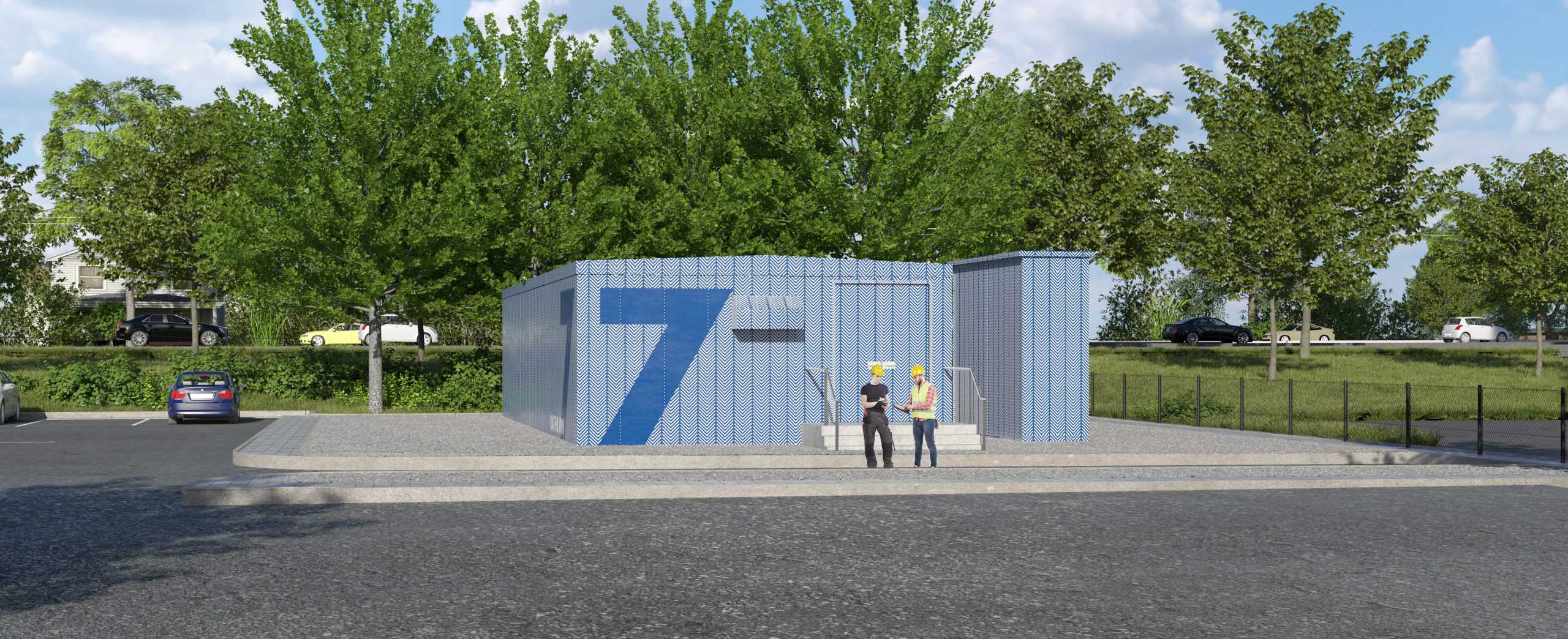Hurontario LRT will include power pods along Mississauga, Brampton route
Published August 9, 2021 at 6:38 pm

When the Hurontario light rail transit (LRT) system is up and running in Mississauga and Brampton just over three years from now, people will easily identify the electric train cars.
But they might not recognize the 13 small steel buildings that will dot the 18-kilometre route, expected to be completed by fall 2024.
Officials with Metrolinx, the Crown agency that manages public transportation in Ontario, specifically in the Golden Horseshoe and Ottawa, say the structures are traction power substations built to keep the emissions-free trains running smoothly.
The small buildings, similar in size to a shipping container, will be used to convert alternating current (AC) electricity from the local power supply to direct current (DC) electricity to generate consistent power to operate the light rail vehicles.
Metrolinx officials say the stations are regularly used for LRT projects and can be found in neighbourhoods across North America. Similar structures are used in Toronto to power the TTC lines.
The Hurontario LRT stations will be built to comply with Health Canada standards, meaning the inclusion of features designed with safety in mind, officials say. All electrical equipment in the structures is enclosed within a locked building, which provides security and absorbs sound, and the sites will receive regular maintenance visits.
Furthermore, the power transformer in these stations is a “dry type”, meaning it won’t leak or catch fire as can be the case with typical utility transformers that use oil for electrical insulation.
Beyond safety features, the stations will not be eyesores, officials say. After the prefabricated units are installed, the area will be cleaned up and landscaped with the planting of trees and shrubs, and laying of sod.
When open to passengers in 2024, the Hurontario LRT will offer 19 stops on a dedicated right-of-way running from the lakeshore in Mississauga to Brampton Gateway Terminal. It will link to GO stations at Port Credit and Cooksville, the Mississauga Transitway, Square One GO Bus Terminal, Brampton Gateway Terminal, and key MiWay and Brampton Transit routes.
Officials say the LRT will be a critical link for residents and businesses in the area as one-quarter of Mississauga’s employment and residents is expected to be along the Hurontario corridor in the next two decades.
Construction, which began in spring 2020, is expected to impact/disrupt residents and businesses. However, officials say they will inform the public with as much notice as possible of potential disruptions.
The initiative is part of Metrolinx’s long-term vision for an integrated, sustainable transit network connecting the Greater Toronto and Hamilton areas.
insauga's Editorial Standards and Policies advertising






